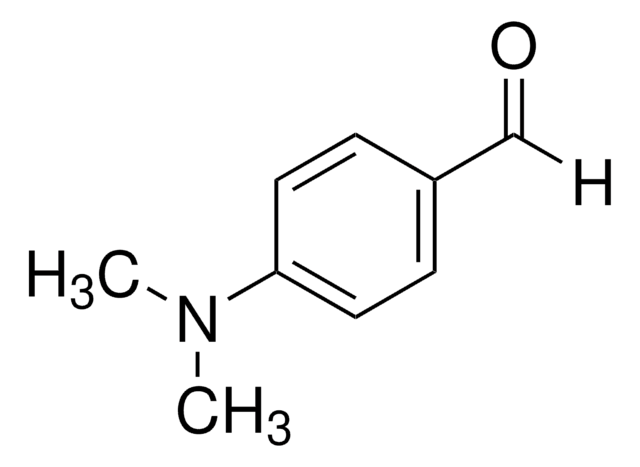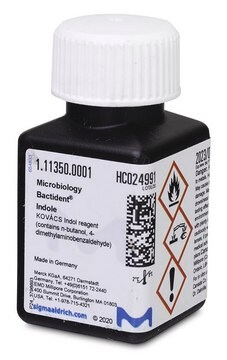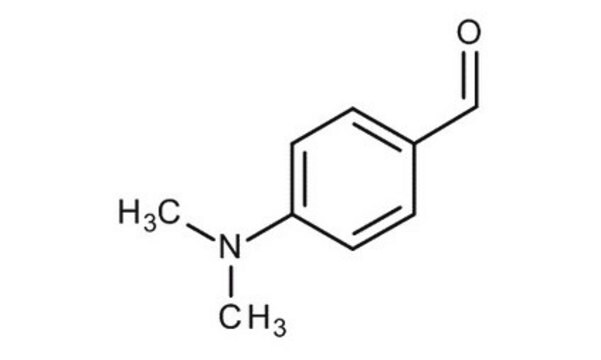60983
Kovac′s reagent for indoles
suitable for microbiology
Sinonimo/i:
4-(Dimethylamino)benzaldehyde solution, Indole reagent according to Kovac
About This Item
Prodotti consigliati
Durata
limited shelf life, expiry date on the label
Livello qualitativo
Composizione
n-butanol
4-dimethylaminobenzaldehyde
hydrochloric acid
tecniche
microbe id | specific enzyme detection: suitable
Indice di rifrazione
n20/D 1.400-1.420
applicazioni
agriculture
clinical testing
environmental
food and beverages
microbiology
Temperatura di conservazione
2-8°C
Compatibilità
Escherichia coli
coliforms
Stringa SMILE
[H]C(=O)c1ccc(cc1)N(C)C
InChI
1S/C9H11NO/c1-10(2)9-5-3-8(7-11)4-6-9/h3-7H,1-2H3
BGNGWHSBYQYVRX-UHFFFAOYSA-N
Cerchi prodotti simili? Visita Guida al confronto tra prodotti
Descrizione generale
Applicazioni
Azioni biochim/fisiol
Avvertenze
Danger
Indicazioni di pericolo
Consigli di prudenza
Classi di pericolo
Acute Tox. 4 Oral - Eye Dam. 1 - Flam. Liq. 3 - Met. Corr. 1 - Skin Irrit. 2 - STOT SE 3
Organi bersaglio
Central nervous system, Respiratory system
Codice della classe di stoccaggio
3 - Flammable liquids
Classe di pericolosità dell'acqua (WGK)
WGK 1
Punto d’infiammabilità (°F)
96.8 °F
Punto d’infiammabilità (°C)
36 °C
Dispositivi di protezione individuale
Faceshields, Gloves, Goggles, type ABEK (EN14387) respirator filter
Scegli una delle versioni più recenti:
Possiedi già questo prodotto?
I documenti relativi ai prodotti acquistati recentemente sono disponibili nell’Archivio dei documenti.
I clienti hanno visto anche
Articoli
An article regarding the Role of Clostridium perfringens and their detection, identification, and differentiation from Sigma-Aldrich.com
For microbiologists the most fundamental stain was developed in 1884 by the Danish bacteriologist Hans Christian Gram.
Sigma-Aldrich.com presents an article concerning Differentiation of Escherichia coli from coliforms.
Il team dei nostri ricercatori vanta grande esperienza in tutte le aree della ricerca quali Life Science, scienza dei materiali, sintesi chimica, cromatografia, discipline analitiche, ecc..
Contatta l'Assistenza Tecnica.












